Don't wanna be here? Send us removal request.
Text
Top Data Recovery Software for Windows
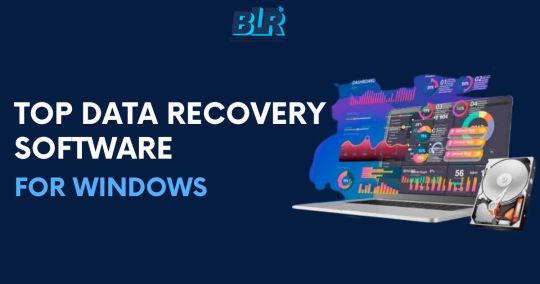
Looking for the best data recovery software for Windows? BLR Data Recovery Tool stands out as one of the top picks, offering a comprehensive solution to recover lost, deleted, or formatted files from hard drives, SSDs, USBs, and other storage devices. Its advanced scanning technology ensures deep recovery of data, even from corrupted or inaccessible drives. With an easy-to-use interface and reliable performance, BLR Data Recovery Tool is the go-to option for both personal and business data recovery needs.
Visit:- https://medium.com/@business_35188/top-data-recovery-software-for-windows-best-picks-4a58959f53bd
#data recovery#lost data recovery#deleted data recovery#best data recovery tool#best data recovery software
0 notes
Text
Convert MBOX to EML Files
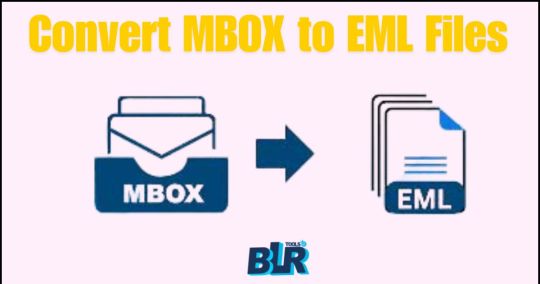
To convert MBOX to EML files manually, you can use email clients like Mozilla Thunderbird. Start by importing the MBOX file into Thunderbird, then select the emails you want to convert, and drag them to a local folder. From there, you can save them as EML files. However, this process can be time-consuming and cumbersome for large files or numerous emails.
For a more efficient solution, consider using a dedicated tool like the BLR Data Recovery Tool. It streamlines the conversion process, allowing you to convert MBOX files to EML format quickly and accurately. Simply load your MBOX file into the software, select the EML format, and let the tool handle the conversion seamlessly. This method saves time and reduces the risk of errors.
Visit:- https://medium.com/@business_35188/convert-mbox-to-eml-files-4-easy-ways-41d145667272
0 notes
Text
Need to Recover Permanently Deleted Videos?

Struggling to get back your lost videos? BLR Data Recovery Tool is here to help! Our powerful software can restore permanently deleted videos from any storage device, even after they've been removed from the Recycle Bin. With a user-friendly interface and advanced recovery algorithms, BLR Data Recovery Tool ensures you get your valuable videos back quickly and efficiently. Don't let accidental deletion stop you—download BLR Data Recovery Tool today and recover your precious memories effortlessly!
Visit:- https://blr-data-recovery-tool-new-software.en.softonic.com/
0 notes
Text
How to Convert MBOX file to PDF - BLR Tools

Converting MBOX files to PDF is easy with the BLR Tools MBOX to PDF Converter. This tool simplifies the process by allowing you to select MBOX files and convert them directly into PDF format in just a few clicks. The software ensures that all email components, including attachments, headers, and formatting, are preserved in the converted PDF files. This is particularly useful for archiving emails or sharing them securely. Follow the straightforward steps within the tool, and you’ll have your emails converted to PDF in no time.
Read Full Article:- https://medium.com/@business_35188/convert-mbox-to-pdf-file-easy-simple-guide-39add687bdb8
0 notes
Text
Retrieve Bitlocker recovery key on Microsoft 365 portal

Retrieving your BitLocker recovery key via the Microsoft 365 portal is a straightforward process that can save you in critical situations where you've lost access to your encrypted drive. To start, log into your Microsoft 365 account and go to the Devices section. From there, select the device that’s encrypted with BitLocker. Under the device details, you’ll find the BitLocker recovery key, which you can use to unlock your drive and regain access to your data.
However, if you encounter issues accessing the Microsoft 365 portal or if the recovery key isn’t available, relying on a specialized BitLocker data recovery tool from BLR Tools can be invaluable. This tool is designed to help users recover data from BitLocker-encrypted drives when the recovery key is lost or inaccessible. With advanced algorithms, the BLR BitLocker Data Recovery Tool can bypass encryption barriers and restore your files safely and efficiently. This ensures that even in challenging scenarios, you have a reliable way to recover your important data without compromising security. Whether for personal use or in a business environment, this tool provides peace of mind when dealing with BitLocker encryption.
Visit:- https://medium.com/@business_35188/retrieve-bitlocker-recovery-key-on-microsoft-365-portal-full-guide-cf4ddd9c5561
0 notes
Text
Top 5 MBOX Converter Tool
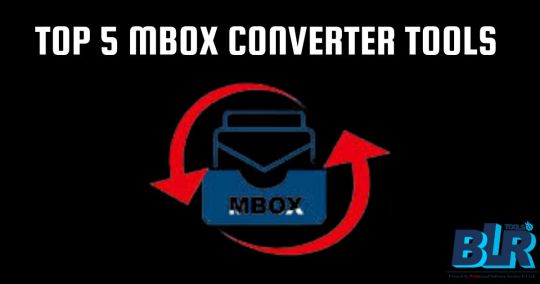
The BLR MBOX Converter Tool is a comprehensive solution designed to meet all your email conversion needs. It effortlessly converts MBOX files into a variety of formats, including EML, MSG, PDF, PST, and HTML, making it a versatile tool for different scenarios. Whether you're migrating emails to a new email client, archiving important messages in PDF format, or ensuring compatibility across multiple platforms, this tool handles it all with precision.
The BLR MBOX Converter Tool preserves the integrity of your data during the conversion process, maintaining the original folder structure, metadata, and attachments. Its user-friendly interface allows even non-technical users to perform conversions with ease, while advanced options cater to more specific requirements, such as selective conversion of emails based on date range or specific criteria.
This tool is perfect for individuals and businesses alike, providing a reliable and efficient way to manage email data across various formats. Whether you're transitioning to Outlook by converting MBOX to PST, creating a secure PDF archive of your emails, or simply need to convert to EML or MSG for easy sharing, the BLR MBOX Converter Tool is your go-to solution for seamless email management and conversion.
Read Full Article:- https://medium.com/@business_35188/top-5-mbox-converter-tool-71ae3983dd6e
0 notes
Text
Recover Shift Deleted Files on Windows 11/10/8/7

Accidentally shift deleted important files? Don’t worry! With BLR Tools’ Data Recovery Tool, recovering shift deleted files on Windows 11/10/8/7 is easier than ever. This advanced software is designed to dig deep into your system, locating and restoring files that were permanently deleted, bypassing the Recycle Bin. Whether you’ve lost crucial documents, cherished photos, or any other file type, BLR Tools provides a quick and efficient recovery process that saves you from data loss.
The software is equipped with an intuitive interface, making it accessible for both beginners and professionals. It also supports a wide range of file formats, ensuring that nothing is left behind. Plus, with its compatibility across multiple Windows versions, you can rely on BLR Tools for all your data recovery needs, regardless of the system you're using. Don’t let accidental deletion cause unnecessary stress—trust BLR Tools for comprehensive and reliable data recovery solutions across all Windows platforms.
Read Full Article:- https://medium.com/@business_35188/recover-shift-deleted-files-on-windows-11-10-8-7-full-guide-9b6a286805db
#Recover Shift Deleted Files on Windows#Recover Shift Deleted Files#deleted data recovery#lost data recovery tool#data recovery tool
0 notes
Text
Convert/Migrate/Import MBOX to 90+ Email Document

The BLR MBOX Converter Software by BLR Tools is a versatile solution for converting, migrating, and importing MBOX files into over 90 different email formats and document types. Whether you need to convert MBOX to PST for Outlook, migrate emails to Office 365, or save them as PDF or HTML files, this tool handles it all with ease. Designed for speed and accuracy, it ensures complete data integrity, preserving your emails, attachments, and metadata throughout the process. The user-friendly interface makes it simple for both novices and professionals to manage large-scale conversions effortlessly. With support for batch processing, the BLR MBOX Converter Software is the ideal tool for efficient email management and migration, catering to the needs of businesses and individuals alike. Trust BLR Tools for a reliable, powerful, and comprehensive email conversion solution.
Learn More:- https://www.openpr.com/news/3625742/blr-mbox-converter-software-convert-migrate-import-mbox
0 notes
Text
Recover Data from a Corrupted SD Card
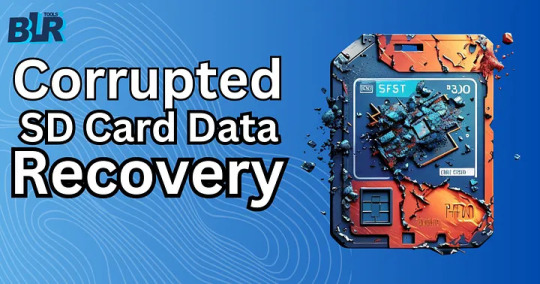
Explore our comprehensive guide on how to recover data from a corrupted SD card and ensure the safety of your valuable files. Whether you've lost cherished photos, essential videos, or crucial documents due to SD card corruption, using the right data recovery tool can be a game-changer. This article offers step-by-step instructions and practical tips to help you navigate the often tricky recovery process with ease. From identifying the causes of corruption to selecting the most effective recovery method, we cover it all. You'll learn how to restore your files quickly and efficiently, minimizing the risk of permanent data loss. Whether you're a tech novice or an experienced user, our guide will empower you to recover your data without hassle. Don't let a corrupted SD card cause unnecessary stress—equip yourself with the knowledge and tools to retrieve your lost files and protect your digital assets for the future.
Read Full Article:- https://medium.com/@business_35188/recover-data-from-a-corrupted-sd-card-2024-update-890b91a6fbb7
#sd card data recovery#lost data recovery#corrupted sd card data recovery#corrupted data recovery#data recovery tool
0 notes
Text
Recover Agfa Camera Card Photos

Lost photos from your Agfa camera card? BLR Tools has you covered with our specialized camera card data recovery software. Designed to handle a variety of data loss scenarios, our tool efficiently recovers photos that have been accidentally deleted, lost due to card corruption, or inaccessible due to formatting issues. Using advanced scanning algorithms, our software thoroughly examines the camera card to retrieve your precious images with a high success rate. The intuitive interface ensures a smooth recovery process, making it accessible even for those without technical expertise. Whether you’re a professional photographer or simply looking to recover cherished memories, BLR Tools provides reliable and effective solutions for all your camera card data recovery needs. Trust us to restore your photos swiftly and accurately, preserving your valuable memories.
Read Full Article :- https://medium.com/@business_35188/recover-agfa-camera-card-photos-full-guide-55f8a4630cc7
0 notes
Text
Recover Unallocated Hard Drive Space on Windows

Discover how to regain control of your storage with my latest article, "Recover Unallocated Hard Drive Space on Windows." In this comprehensive guide, I explore effective and practical solutions for reclaiming lost or missing storage that may have occurred due to accidental deletion, disk errors, or formatting mishaps. If you've encountered unallocated space on your hard drive and are unsure how to proceed, this article is your go-to resource.
I'll take you step by step through the recovery process, highlighting the use of a top-notch hard drive data recovery tool designed to restore your valuable data quickly and efficiently. Whether you're a tech novice or a seasoned expert, this guide offers valuable insights and actionable tips to help you handle unallocated space with ease and confidence.
Unallocated space shouldn't disrupt your workflow or limit your access to important files. With the right data recovery tool, you can recover lost partitions, access inaccessible storage, and ensure that your files are safely and securely restored. Don’t let storage issues hold you back—explore this essential guide and equip yourself with the knowledge and tools needed to tackle unallocated hard drive space effectively.
Read Full Article:- https://medium.com/@business_35188/how-to-recover-unallocated-hard-drive-space-on-windows-195547231d55
0 notes
Text
Recover Deleted DNG Files Windows/Mac [Full Guide]

Explore the ultimate guide to recovering deleted DNG files on both Windows and Mac. Whether you've accidentally erased precious photos or are facing file corruption, this comprehensive article offers step-by-step instructions tailored to your needs. Delve into various recovery techniques, from using specialized software to employing manual methods, all designed to help you retrieve your lost DNG files with ease. With clear explanations and expert tips, you'll gain the confidence to tackle any data loss scenario, ensuring that your valuable memories and professional work are never lost for good.
This guide covers the most effective recovery tools available, providing insights into their unique features and how to best utilize them for DNG file recovery. You'll also find preventive measures to avoid future data loss, helping you safeguard your digital assets. Whether you're a professional photographer, a creative enthusiast, or someone who simply cherishes their photo collection, mastering the art of DNG file recovery is essential. By following the advice in this guide, you'll be equipped to restore your files quickly, safely, and efficiently, preserving what matters most to you.
Read Full Article:- https://medium.com/@business_35188/recover-deleted-dng-files-windows-mac-full-guide-3c1240bca8a0
0 notes
Text
Recover Deleted MXF Video Files
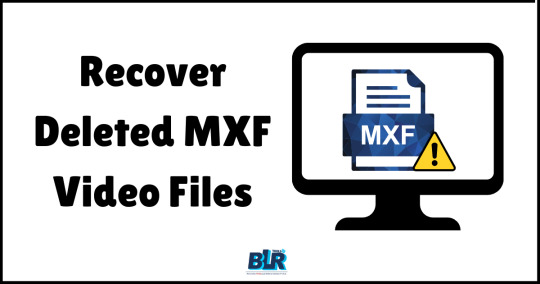
Recovering deleted MXF video files can be a daunting task, but with BLR Tools, it’s straightforward and efficient. Whether your files were accidentally deleted, corrupted, or lost due to a system crash, our powerful data recovery tool is designed to bring them back. Featuring advanced scanning algorithms, BLR Tools can thoroughly search your storage devices to locate and restore your lost MXF videos quickly. Simply run the software, initiate the scan, and watch as your valuable video files are recovered with just a few clicks. Preserve your important content and ensure that your MXF files are always within reach!
Read More:- https://indibloghub.com/post/recover-deleted-mxf-video-files-solved
0 notes
Text
Recovering Data from Hynix 1TB SSD

If you have lost data on your Hynix 1TB SSD, don’t worry! This full guide will help you recover your precious files. Start by using a reliable data recovery tool like BLR Data Recovery Software, which is designed to handle SSDs efficiently. Install the software, run a deep scan on your Hynix SSD, and let it find your lost data. Once the scan is complete, preview the recoverable files and select the ones you need. Finally, restore the selected files to a safe location. With these simple steps, you can recover your data and get back to normal operations quickly.
Read Full Article:- https://a4alinamail.wixsite.com/datarecoverysoftware/post/recovering-data-from-hynix-1tb-ssd-full-guide
0 notes
Text
Recover Data from Synology Drive

If you've lost data on your Synology Drive, BLR Tools has the perfect solution. Our advanced data recovery software can help you retrieve lost or deleted files from Synology NAS devices quickly and efficiently. Whether it's due to accidental deletion, RAID failure, or system crash, BLR Tools' intuitive interface and powerful algorithms ensure a smooth recovery process. Trust BLR Tools for reliable Synology Drive data recovery and get your important files back in no time.
Read Full Article:- https://medium.com/@business_35188/how-to-recover-data-from-synology-drive-11be70865e00
0 notes
Text
USB Flash Drive Data Recovery

Accidentally deleted files from your USB flash drive? BLR Tools offers a powerful USB Flash Drive Data Recovery solution to help you retrieve your lost data quickly and efficiently. Our advanced software supports all file types and provides deep scanning capabilities to ensure thorough recovery. With an intuitive interface and reliable performance, BLR Tools makes data recovery simple and stress-free. Trust BLR Tools to recover your important files from any USB flash drive mishap. Download today!
Read Full Article:- Tutorial on USB Flash Drive Data Recovery
#usb flash drive data recovery tool#data recovery tool#usb drive data recovery#blr tools#lost data recovery
0 notes
Text
Recover Deleted Zip Files with BLR Tools

Accidentally deleted an important ZIP file? BLR Tools has got you covered. Our advanced data recovery software is designed to retrieve lost or deleted ZIP files from various storage devices, including hard drives, USB drives, and SD cards. With powerful scanning algorithms and an intuitive interface, BLR Tools makes the recovery process quick and easy.
Whether you’ve lost files due to accidental deletion, formatting, or system crashes, trust BLR deleted data recovery tool to help you recover your valuable data efficiently. Download BLR Data Recovery Software today and restore your ZIP files effortlessly.
Read More:- https://medium.com/@business_35188/the-complete-guide-to-recover-deleted-zip-files-5ad14ed052b3
#recover deleted zip files#recover deletd data#data recovery tool#data recovey#zip files#recover zip files
0 notes